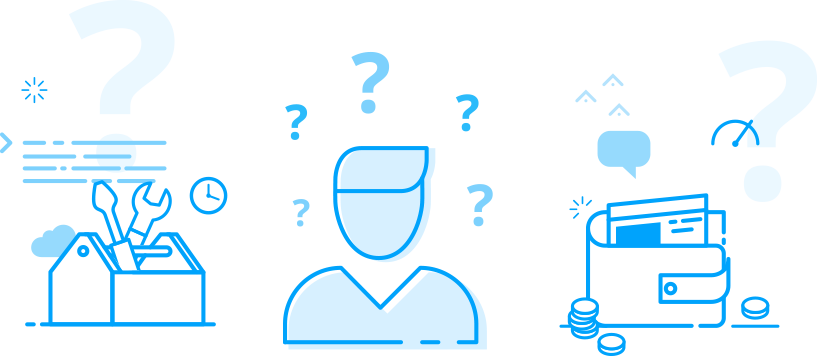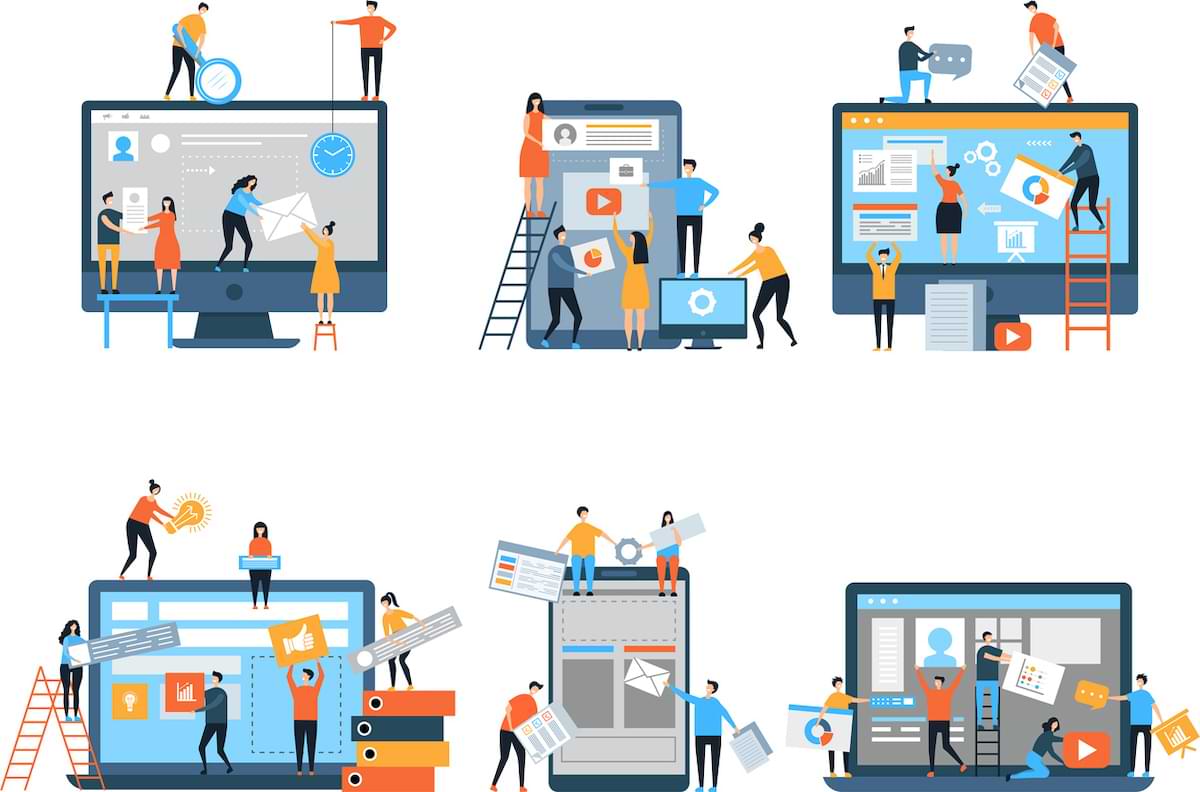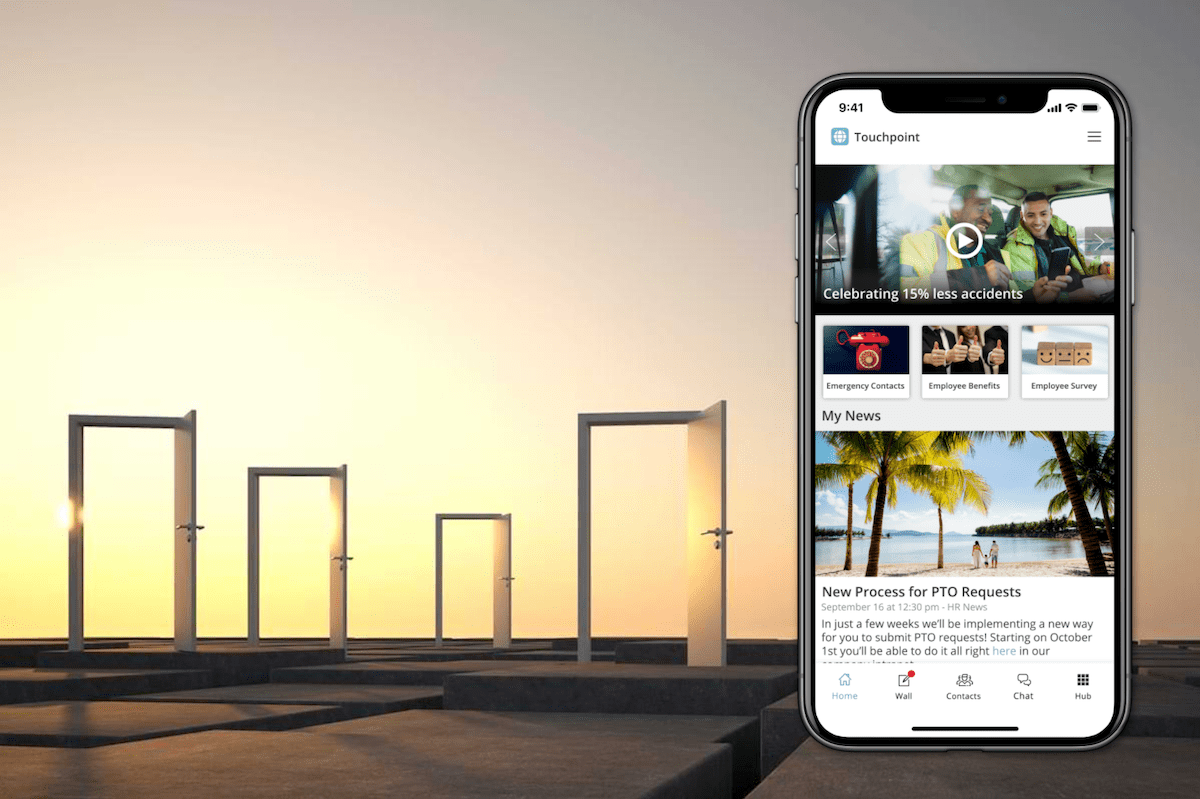One of the first questions to answer when thinking about implementing internal communications software such as an employee app is whether to build your own or to purchase a ready-made solution. Making your own might seem appealing at first, considering that you can decide what the product will look like and do, but at the end of the day it’s a losing game.
Think about it: you wouldn’t try to build your own document editor or a custom account management system. In fact, most companies see the clear value of Software-as-a-Service in terms of lower costs, reduced risk, and shorter delivery time.
Let’s look at the five main reasons why you should consider using a ready-made solution for your internal communications app and not developing your own:
1. Costs
One of the best-known internal communications app development projects was carried out at Barclay’s. Their team needed a seven-digit budget just to prepare for launch. In our experience, that’s a pretty good benchmark. At Staffbase, on the other hand, hundreds of customers share the development costs of the platform and therefore get their app for just a fraction of the price.
Companies often underestimate the expenses involved in concept creation, project management, testing, and the inevitable requests for changes. But the biggest hidden cost is for ongoing maintenance. Most apps are based on Android and iOS. Those platforms change often and your budget therefore needs to plan for this eventuality.
Consider these following challenges when it comes to budget:
- Development Costs: As in every IT project, development cost estimates are very likely to be too low. The complexity of an app solution is very hard to see without first creating a very detailed concept. Typically underestimated issues include user onboarding (how to support users without email address?), security (secure hosting environment), integration (do we sync with Active Directory or CSV?), media (image and video hosting for Enterprise scale), Apple review (a number of steps are taken to get employee-facing apps into the App Store), and Android complexity (these are countless software versions, screen sizes, devices, etc.).
- Costs of management content: “It’s just an app” is the kind of thinking that leads to project costs being underestimated. Just consider the issue of how content gets into the app. 75% of our development power at Staffbase goes into things our customers can’t immediately see: a Content Management System, performance, infrastructure.
- Maintenance Costs: New Android and iOS versions often face fast-breaking changes. If you don’t apply them quickly, your app will be useless to any user of a new OS. Especially when it comes to iOS, most people use automated updates, immediately switching to updated versions. The app development team needs to stay tuned 24/7 and react to changes immediately. Staffbase provides a monthly app update.
- Costs for wrong decisions: You usually can’t test a custom app project until it’s been launched. That’s rather late to find out whether your employees will like its features and understand the way they’ve been implemented. Meeting extensive requirements, carrying out in-house research, and designing usability engineering beforehand, all come with additional expenses, which is why they don’t get done in most projects. The result is that it’s likely that (parts of) the app will fail.
- Costs for multiple apps: A custom app often seems like the best choice for a company that doesn’t see the need for additional features or extensions. But should your app become successful, you’ll be faced with multiple demands from other departments for these very things. If you can’t meet these demands, then get ready for your people — not to mention IT — to start looking for their own app solutions. The result will be a chaotic app overload with even more costs and fewer chances for the project on which you’ve spent so much time and effort to become adopted by employees. You wouldn’t be the first to reach this point only to find yourself starting fresh with a SaaS provider after all.
2. Time

Staffbase can give you a preview of your app immediately following signup. Launching a pilot can happen in a matter of days. In comparison, the time you needed for a custom app project can only be estimated, and it depends on the following points:
- Time for concept: If you start from scratch, you’ll be the one drawing mockups and writing specifications. The 80/20 rule applies when creating a concept for a mobile app: It won’t take you long to come up with a few sketches (20%). But the devil is in the details: How exactly does the user onboarding process work? What happens when users loose their credentials? What are required fields for an editor?
- Time for decision making: If you develop your own concept, get ready for endless discussions. You can easily spend month after month attending meetings with different stakeholders discussing button colors and basic functionalities.
- Time for approval: Staffbase has proven processes and can answer questions from your works council, data protection officers, and IT security team. With a custom solution, approval processes tend to take much longer.
- Time for development: This depends heavily on your resources, skills, and development approach. And don’t forget that you’re going to need three versions of an internal communications app: Android, iOS, and web.
- Time for testing: Nobody wants to use an app full of bugs. Staffbase has a quality management process and the platform is used successfully by hundreds of customers.
- Time for App Store submission: When it comes to internal communications apps, getting an app into the App Store is important. Did you know that you need to have public content next to your login button? Have you planned for a secure and separate access for the Apple reviewer (they’ll want to log in to see what’s behind the login form)? And how do you deal with the reviewer if they still reject your app? You wouldn’t be the first to lose another few months after the app has been “finished” before it finally arrives in the stores and is ready for use.
- Time for downtimes: Most custom app projects don’t run on a reliable backend. They’re hosted on “a server.” If that server goes down on a Monday morning — or during your CEO’s keynote at the Town Hall — then it’ll likely be time to go looking for something else.
- Time for maintenance: As we mentioned earlier, new Android and iOS versions often include fast-breaking changes. If you don’t apply them quickly, your app will be useless to any user of a new version. Especially when it comes to iOS, most people use automated updates, immediately switching to new versions. Often, there’s a very limited window of time after Apple’s final development preview until a new version gets pushed to the users.
3. Risks

For the main part, you should focus on how to promote your internal communications app and build an audience. The biggest risk is that nobody needs and uses your app. At Staffbase our main focus is on supporting you with ready-made use cases which have been proven to serve the purpose of higher adoption rates. During onboarding, our delivery team will advise you based on what we have seen to be proven strategies for attracting employees to your app. Staffbase massively reduces the adoption risk for you with benchmarks of up to 80% adoption rates. A custom solution won’t show whether your concept works until after you’ve launched your app and already made the investment.
With Staffbase you’ll be able to see what you get before you commit to an investment. That’s a huge difference in comparison to a custom project. Staffbase gets you management buy-in based on an up-and-running application. With your own custom solution you have to achieve this with slideware, which leaves all the technical implementation risks to your project. Will your development team deliver in time — with quality and in budget? More than 50% of IT project teams don’t.
4. A Lack of Technical Proficiency
Building an app is no solo project. You need a big development team with extensive technological skills. Front-end and back-end developers, a native developer, a UI/UX Designer, technical writers, quality managers, and full-stack web developers. And even if you have all these people, it takes them much longer to develop an app then you might think, even if it’s their priority (which isn’t the case in most companies. Your developers normally have lots of other things to do, and the cost of hiring an extra task force is already much more expensive than a ready-made solution).
5. Security
When it comes to security, you need to look at the whole package: Your app might be installed on private devices. Push notifications will be sent out over the infrastructure of Google and Apple. Your server has to be accessible from outside the firewall. If employees leave the company, how do you revoke their access to the app? Some of the content should be visible to everyone in the company, while other parts need to be restricted to a certain group.
Staffbase offers proven, battle-tested solutions to all of these problems. Our infrastructure is used by industry leaders worldwide who take stock in the knowledge that Staffbase complies with all of the very strict German data protection laws. And we’re ISO 27000 certified. You’d have to make significant investments into your app’s infrastructure in order to achieve a comparable level of security for a custom solution. As for sensitive information that really needs to stay internal, you can always create your own custom plugins which will be hosted in-house on your own servers.

To be fair, we should of course also consider the most common arguments that speak for building your own app. Luckily, Staffbase answers all of these questions, too.
a) Off-the-Shelf Software Can’t Meet Every Need
Ready-made solutions generally address most needs of many companies — but not all of them. Often our customers tell us, “We have very special requirements.”
If that’s the case, a custom project might be the best option. That said, we find that 90% of our customers’ needs can be supported by Staffbase’s basic features. The remaining 10% can be added into a custom project using our standard APIs or by creating a plugin. We recommend a custom project only if Staffbase’s standard feature set can’t help you at all. So if you want to introduce a massive multiplayer first-person shooter game for your company then yes, you should think about a custom project. But in a majority of cases, going with the standardized Staffbase app will be the better option.
Another argument we hear a lot is, “We have a very special design.” Design doesn’t make up more than 5% of the overall project costs of an app, and most designs can be achieved using Staffbase customization options. You can use your own logo, icons, typography, and colors.
Also, consider the app policies of Android and iOS. Staffbase acknowledges platform standards and usability experience from our ongoing experience with hundreds of thousands of employees with all kinds of job roles. Nothing works for everyone, but Staffbase comes close.
b) Canned Solutions Are Rigid
We hear this argument a lot: With a set solution it’s going to be difficult for us to add or subtract features, meaning we’re going to have either too many or too few functions. But the fact is, once our customers see what we have to offer, most are convinced otherwise, especially when they learn that our plugins are flexible and you can freely choose when to add or lose something.
Popular features are:
- News Use the personalized newsfeed to spread internal company information, keep everybody up to date, and engage your employees by letting them share their experiences.
- Pages and Documents Create new pages and documents to further organize your workflow and target content. Your company’s structure will be reflected in your app.
- Employee Directory All important information about your employees (names, phone numbers, email addresses) can be added to the app, as well as emergency contacts, etc.
- Push Notifications Push Notifications are the magic formula for immediately sending and receiving important information — at any time and no matter where your employees are in the world.
- Cafeteria Menus Don’t underestimate the importance of a good lunch. Distribute the day’s meal options for everyone to see, which will also be a great way to motivate your employees to check the app at least once a day.
- Surveys Surveys are a great way to track employee happiness. Three basic smileys will help you to check employee satisfaction daily and never miss a beat on the mood of your organization.
- Locations Especially for companies with subsidiaries around the world, maps and locations settings will help employees find the conference room, the workshop space, or the chamber of secrets.
- Upload Images, Videos, and Documents To make the app experience more versatile and fun, users can upload all forms of media. Use videos to teach your employees new skills, or share pictures to give the app more social appeal.
- Multi-language Support for Content Plugins Having an international team means having multiple languages with which to to contend. Our app supports content in more than forty languages, and the interface adjusts to the language used on the device on which the app is displayed.
- Forms Checklists, directories, reports, and financial documents will find a new home in the Staffbase app. Store all your important forms on one platform and save valuable time otherwise spent searching.
- Custom Plugins Along with our long list of standard features, your development team can design their own custom plugins to compliment our set of API’s.
c) Off-the-Shelf Software Isn’t Compatible with Other Programs
Most companies have existing software that will need to be compatible with their employee app. Because SharePoint is by far the most requested source, we’ve built a standard SharePoint connection that will work with SharePoint Online and SharePoint on-premises. In addition, we have have add-ons for your Active Directories, and REST APIs for custom integration of existing content and integration of user directories.
The Staffbase Employee Experience Platform is built for businesses, and no two businesses are alike. We get that. That’s why we’ve built customization and extensibility into the core of our product. Your app will be all yours, even if you didn’t build it from scratch.



